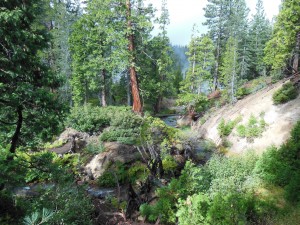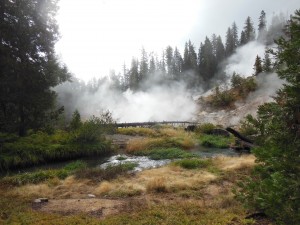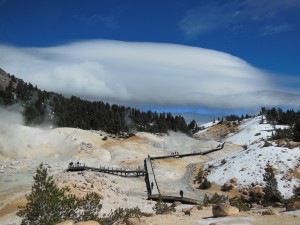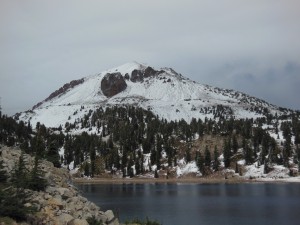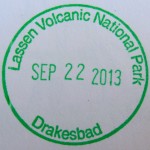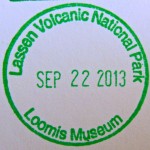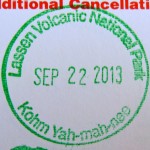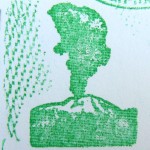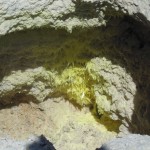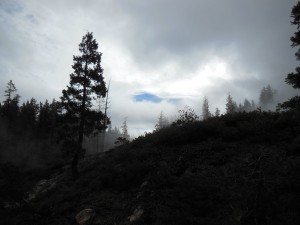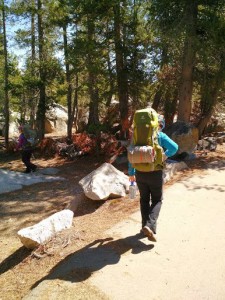
I’ve always enjoyed hiking, and camping is something I’ve rediscovered over the past few years after a rather long hiatus since my girl scout days (but I still remember those camping trips to Sunset Beach!). However, never have I combined the two in the form of backpacking until earlier this month. We’d been talking about it for a while — after all, this is a skill that will let me see more of the national parks — and some good friends, much more experienced outdoorspeople, had offered to help us through our inaugural experience.
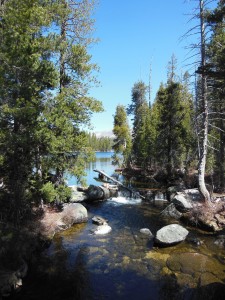
First stop was REI to use up our member coupons and dividends to procure new camping backpacks and a few other essentials. Good thing about going with experienced friends was that we didn’t need to buy all the gear, but we did get some good quality insulating layers since the forecast was calling for temperatures in the 20s and our own water filter (trust me – you don’t mess with giardia, giardia messes with you!). Next stop: the Desolation Wilderness in the El Dorado National Forest near South Lake Tahoe. Side note: I took my first non-scout camping trip in Death Valley and first backpacking in Desolation Wilderness – I’m sensing a theme here.
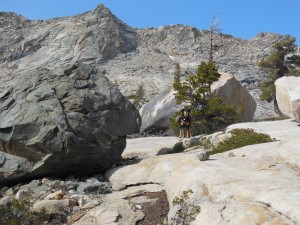
Our friends truly tried to take it easy on us on this single-night camping trip: We started from a parking lot near Wright’s lake, where the forest service has a seemingly nice summer campground facility, and hiked the ~5 miles or so into the Desolation Wilderness to Twin Lakes. Not a long hike, but the elevation went from 7000 ft at Wright’s Lake to ~8200 ft at Twin Lakes. I tend to need a day or so to adjust to higher elevations, so between that and some other extenuating circumstances, I was really struggling with the uphill. Add in the dropping temperatures and nerves about backpacking for the first time, and I was admittedly pretty miserable the first day (I was missing the Final Four for this?). In my defense, I still contend that the term “leisurely hike” is relative when you’re talking about trudging through snow and ice to get to a frozen lake… The scenery could not be beat, however!
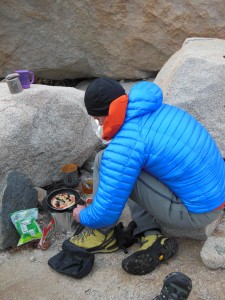
We set up camp next to a large boulder near the outlet to the lake. Our trusty guides had brought along a few extras to help deal with the cold temps, including an extra sleeping bag, battery-powered heated gloves (amazing!), and the makings of warm backcountry pizzas cooked up on the little backpacking stove. I was quite impressed by the pizzas – campmade dough and everything! The nighttime brought cold winds, but I stayed fairly cozy in the the sleeping bag(s) and tent. When I had to get up in the middle of the night, there was definitely snow crunching underfoot, but it didn’t stick through to the morning.
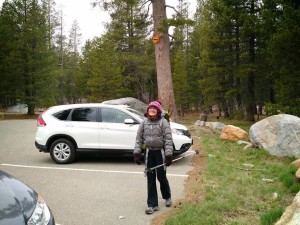
In the morning, we said goodbye to the lake – it really was quite an amazing site all frozen and covered in ice! Fueled up with hot cocoa and oatmeal spiked with dried apples and trail mix, we headed back down to the car. I only fell on my butt once while trekking over the fresh ice, and in general I was able to appreciate the hike and the landscape a lot more on the way down. That being said, I was pretty excited to make it back to the car, even more excited to reach 4G range to find out Duke was going to the NCAA finals, and even more excited to reach a veggie burger in Placerville. So, perhaps my first backpacking experience was not completed with as much ease as I had hoped, but under some slightly different circumstances, I think I would have really enjoyed this hike. I’ll definitely have to give it another go and (very) slowly work my way up to being a backcountry camper!

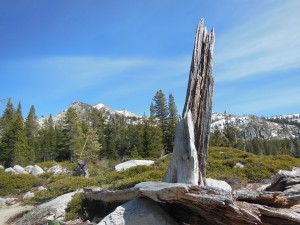
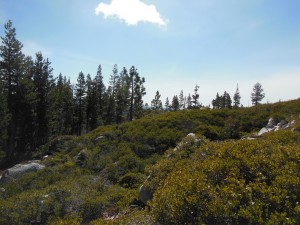
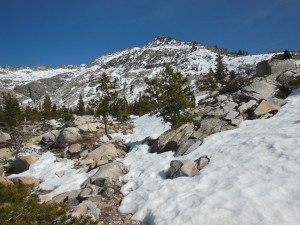
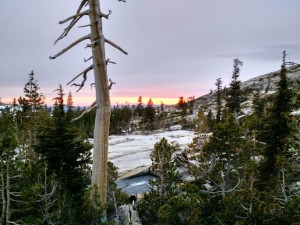
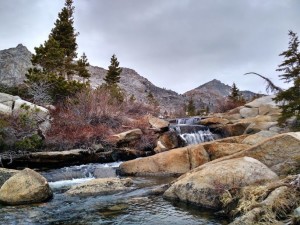
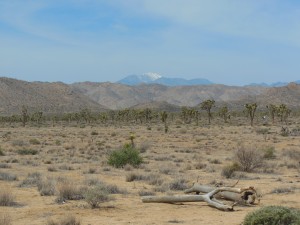

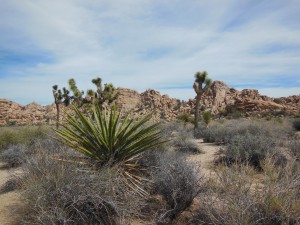
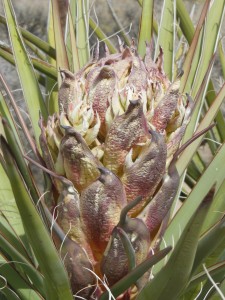
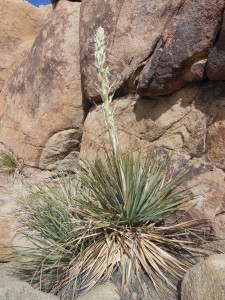
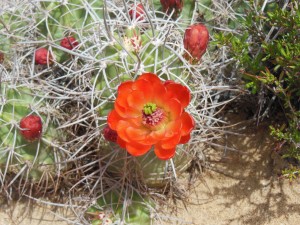
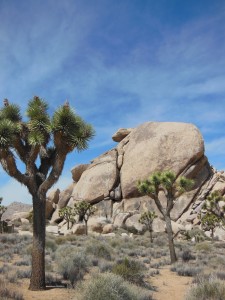
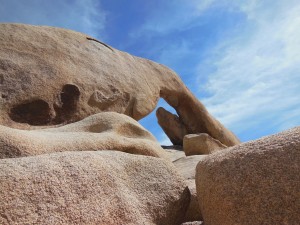
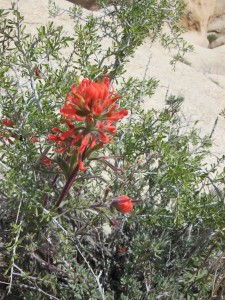 we saw lots of lizards, including two chuckwallas. Chuckwallas can live up to 40 years and grow to something like 15 inches long. We saw an adult male, with the characteristic orange body and black head, and a female (or perhaps a juvenile?) with a greenish brown pattern and a striped tail.
we saw lots of lizards, including two chuckwallas. Chuckwallas can live up to 40 years and grow to something like 15 inches long. We saw an adult male, with the characteristic orange body and black head, and a female (or perhaps a juvenile?) with a greenish brown pattern and a striped tail.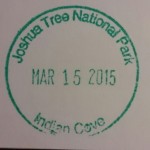 On our way out of town, I did stop in at the Indian Cove ranger station to pick up one of the passport cancellations I didn’t yet have for the park. Is it cheating if I didn’t stay at the campground? Oh well.
On our way out of town, I did stop in at the Indian Cove ranger station to pick up one of the passport cancellations I didn’t yet have for the park. Is it cheating if I didn’t stay at the campground? Oh well.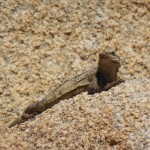
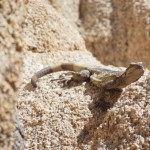
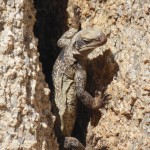
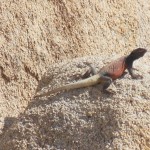
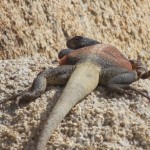
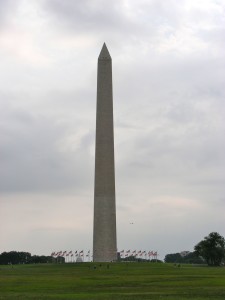 Here’s a couple from my trip a few years back:
Here’s a couple from my trip a few years back: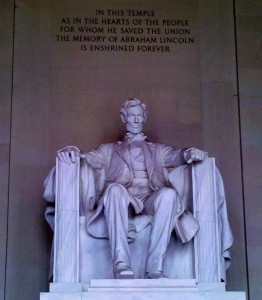
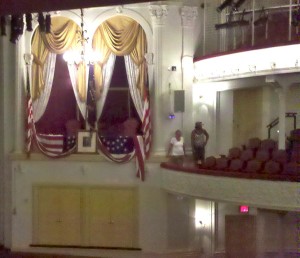 Peterson House across the street where Lincoln died (closed when I visited so not sure if there’s a cancellation – or perhaps I passed up
Peterson House across the street where Lincoln died (closed when I visited so not sure if there’s a cancellation – or perhaps I passed up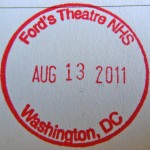
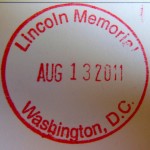 the opportunity to stamp it at the theater on the same principle I mentioned above?).
the opportunity to stamp it at the theater on the same principle I mentioned above?).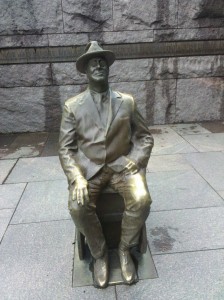 This
This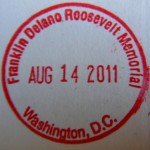 one was new since I last visited the area on that 8th grade field trip. A good stop if you’re walking around the Tidal Basin en route from the Lincoln Memorial to the Jefferson Memorial. There are four sections to walk through dedicated to the president’s four terms, and the memorial gives a pretty balanced look at the highs and lows of a very eventful presidency. This memorial is also near the Martin Luther King Jr. Memorial, which was still fenced off before opening the year we were there.
one was new since I last visited the area on that 8th grade field trip. A good stop if you’re walking around the Tidal Basin en route from the Lincoln Memorial to the Jefferson Memorial. There are four sections to walk through dedicated to the president’s four terms, and the memorial gives a pretty balanced look at the highs and lows of a very eventful presidency. This memorial is also near the Martin Luther King Jr. Memorial, which was still fenced off before opening the year we were there.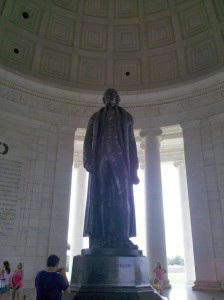
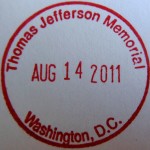 visit to Monticello near Charlottesville, VA.
visit to Monticello near Charlottesville, VA.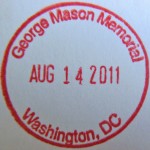
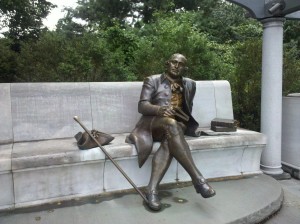
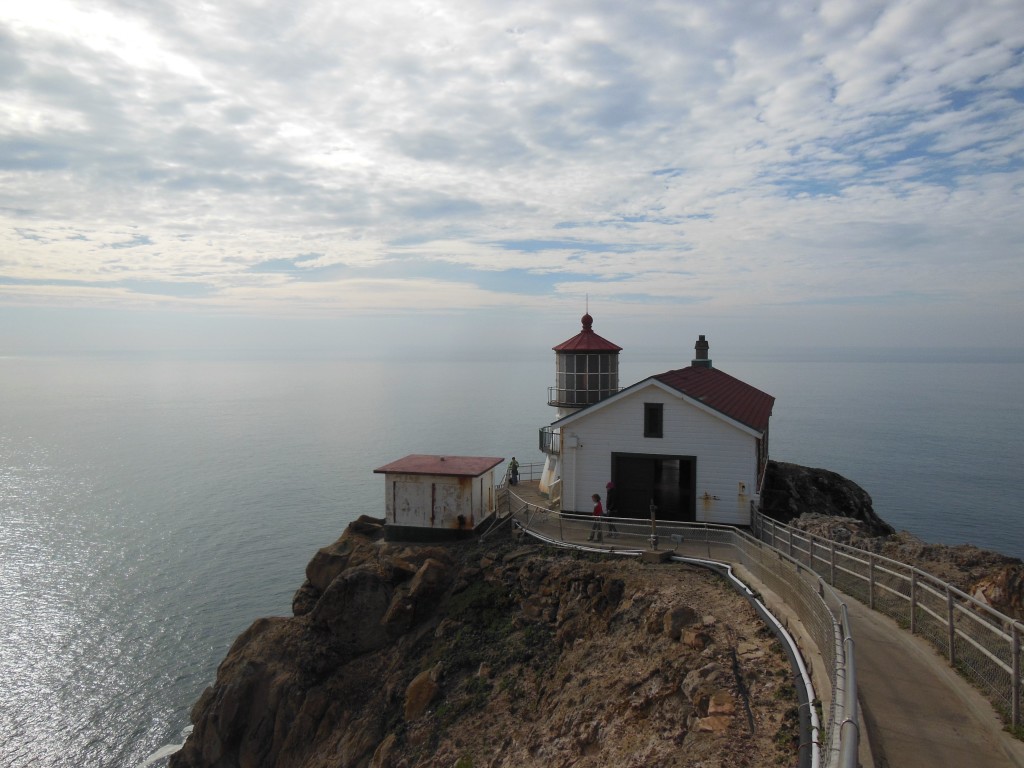
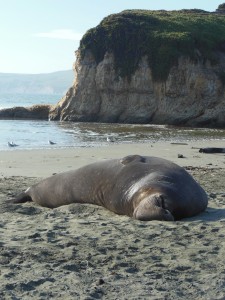
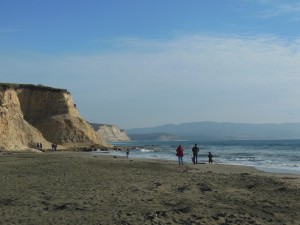
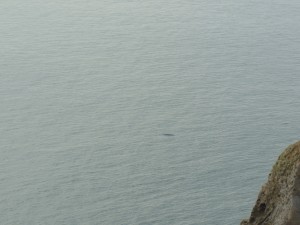
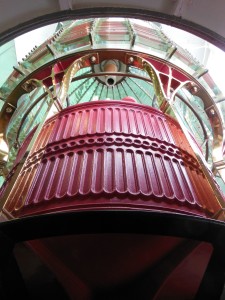
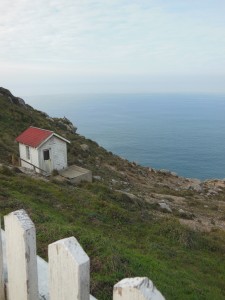
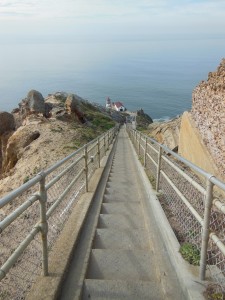
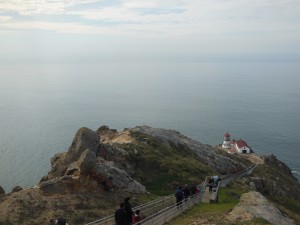
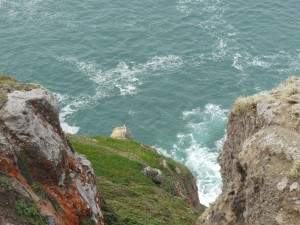
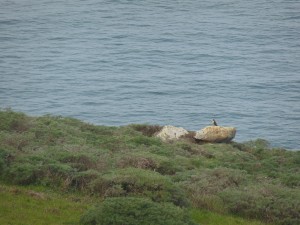
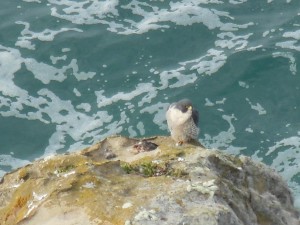
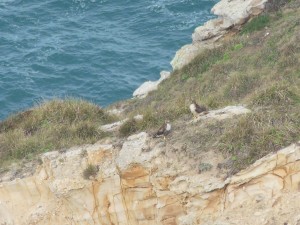
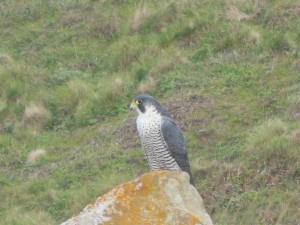
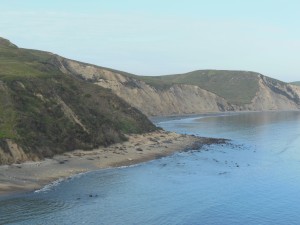
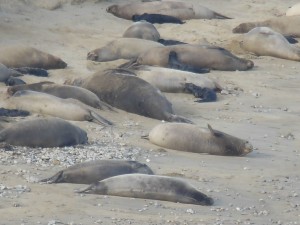
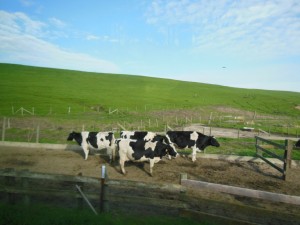
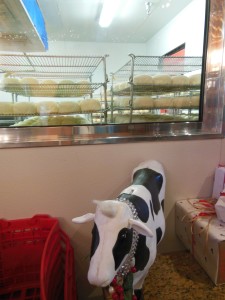
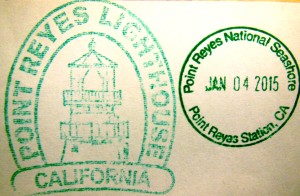 center in the park.
center in the park.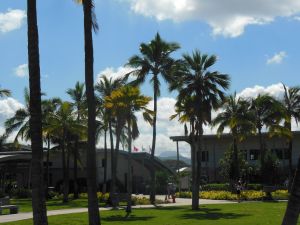
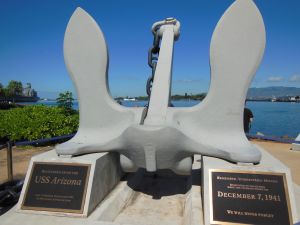
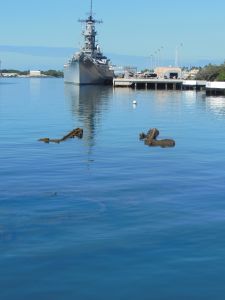 The Visitor’s Center has a museum and is the base for the U.S.S. Arizona, Utah, and Oklahoma memorials, honoring those ships and the people who perished in the attacks. The museum gives the details of the events of Dec. 7, 1941, including the military details of the attack and the day as it played out for the people of Pearl Harbor. There are some interesting artifacts, including a marked up draft copy of FDR’s famous “a date that will live in infamy” speech. The exhibits definitely freshened my memory from that report I wrote in 3rd grade…
The Visitor’s Center has a museum and is the base for the U.S.S. Arizona, Utah, and Oklahoma memorials, honoring those ships and the people who perished in the attacks. The museum gives the details of the events of Dec. 7, 1941, including the military details of the attack and the day as it played out for the people of Pearl Harbor. There are some interesting artifacts, including a marked up draft copy of FDR’s famous “a date that will live in infamy” speech. The exhibits definitely freshened my memory from that report I wrote in 3rd grade…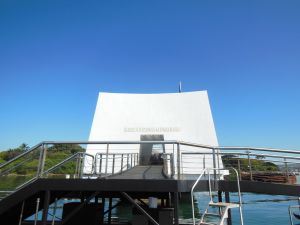 “centerpiece” of the monument. The memorial is only accessible by boat with a ticket from the Visitor’s Center. The short boat ride across the harbor is preceded by a film, and then visitors are given time for observation at the memorial, which is built immediately over the ship. Almost 1800 men were lost when the ship sunk and are still entombed there. The names of all those lost in the Arizona are engraved onto a wall at the far end of the memorial.
“centerpiece” of the monument. The memorial is only accessible by boat with a ticket from the Visitor’s Center. The short boat ride across the harbor is preceded by a film, and then visitors are given time for observation at the memorial, which is built immediately over the ship. Almost 1800 men were lost when the ship sunk and are still entombed there. The names of all those lost in the Arizona are engraved onto a wall at the far end of the memorial. 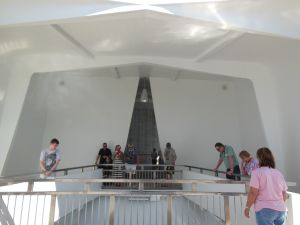 Interestingly, a side panel also lists the names of U.S.S. Arizona survivors who later requested to be interred there. From the observation deck, you can see fish darting in and out of the corroded metal of the Arizona and oil slicks that to this day still rise to the surface.
Interestingly, a side panel also lists the names of U.S.S. Arizona survivors who later requested to be interred there. From the observation deck, you can see fish darting in and out of the corroded metal of the Arizona and oil slicks that to this day still rise to the surface.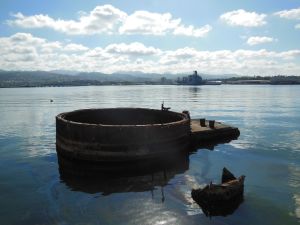 In addition to the U.S.S. Arizona memorial, there is a small, separately managed naval museum including a small sub available for tour at the site of the visitor’s center. I believe a shuttle will also take you over the U.S.S. Oklahoma Memorial, but the Utah is not open to the public as it is on the active military base.
In addition to the U.S.S. Arizona memorial, there is a small, separately managed naval museum including a small sub available for tour at the site of the visitor’s center. I believe a shuttle will also take you over the U.S.S. Oklahoma Memorial, but the Utah is not open to the public as it is on the active military base.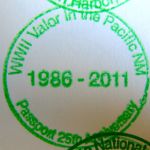
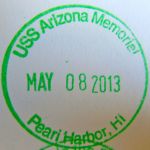
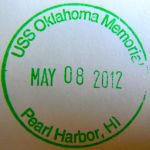
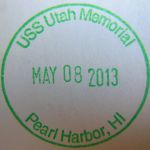
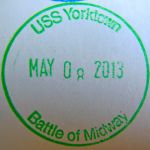
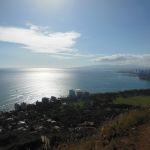
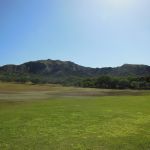
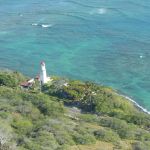
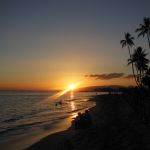
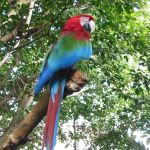
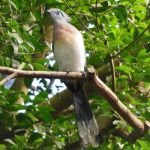
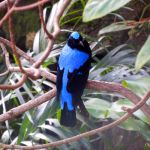
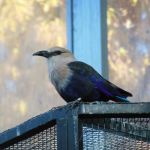
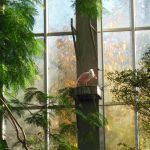
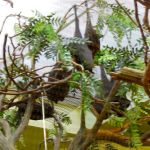
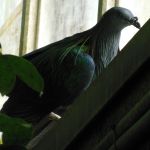
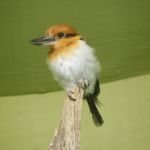
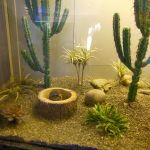
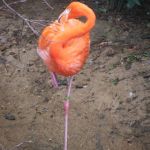
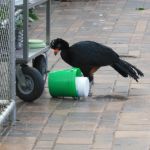
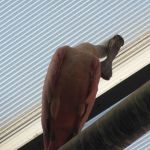
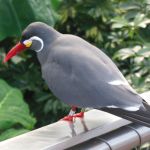
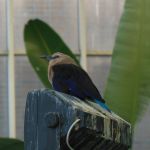
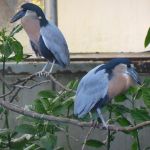
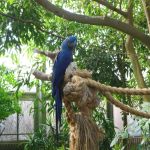
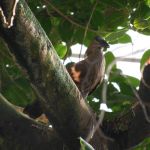
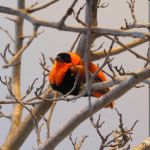
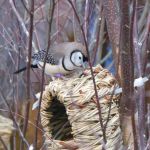
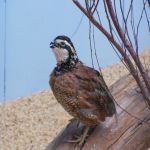
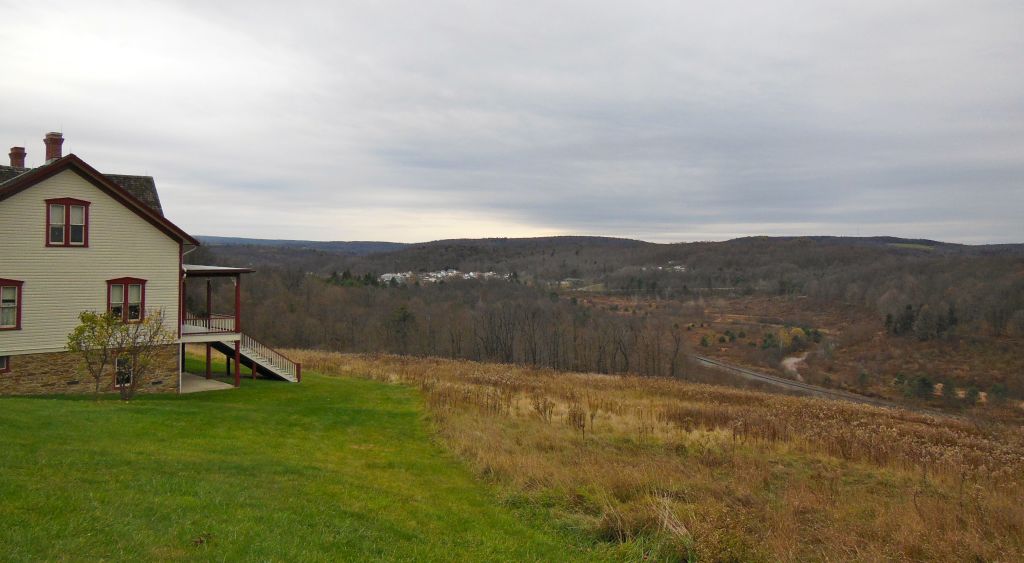
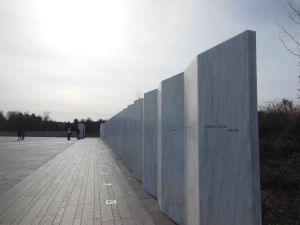
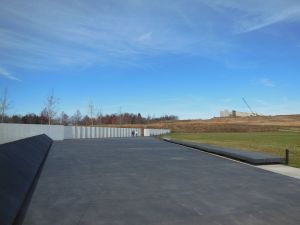
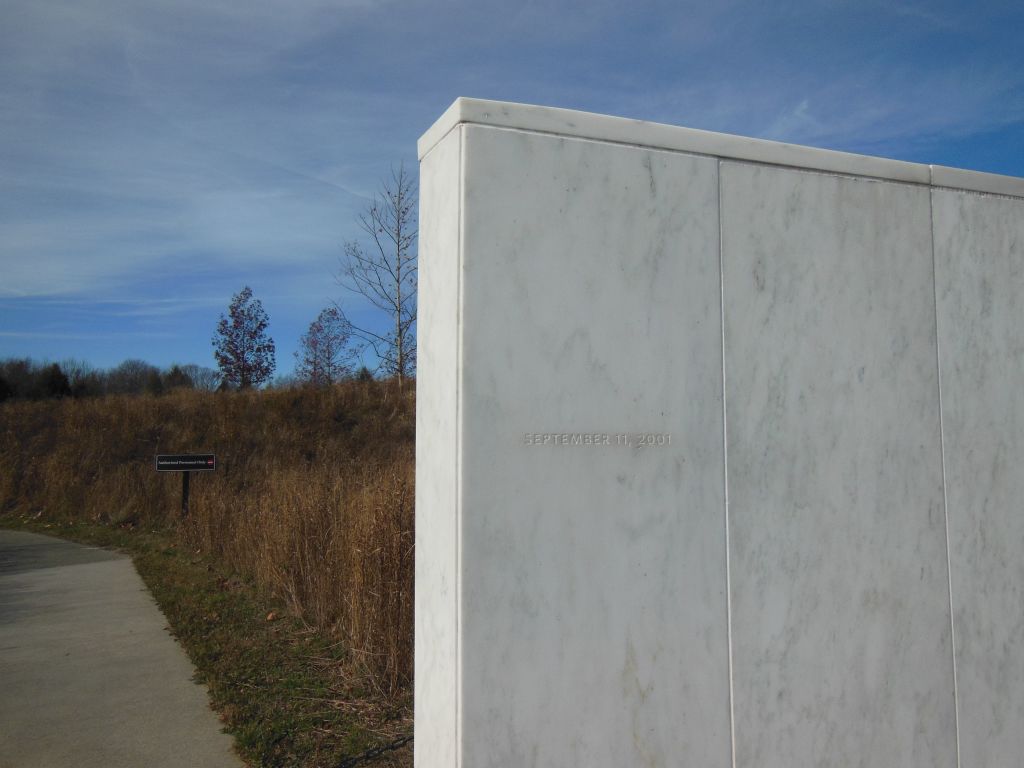
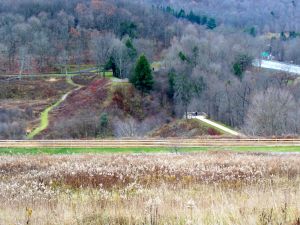
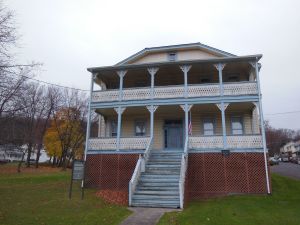
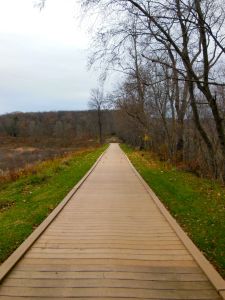
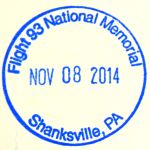
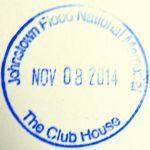
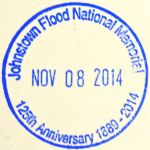
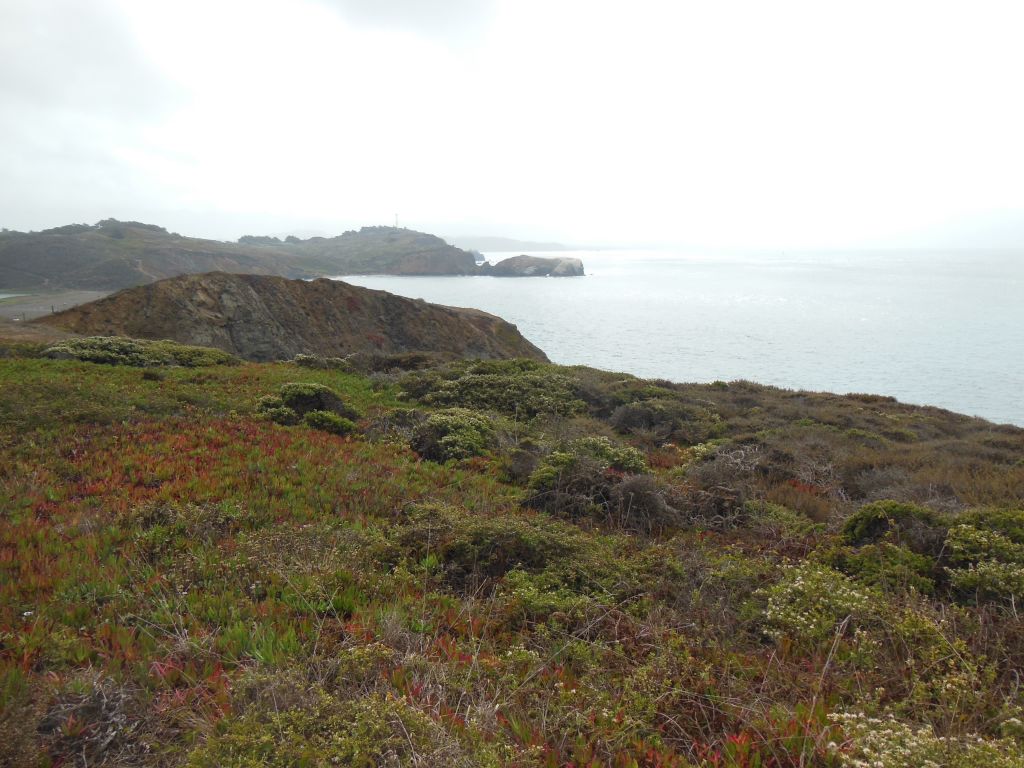
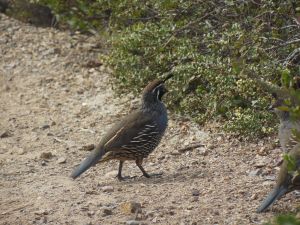
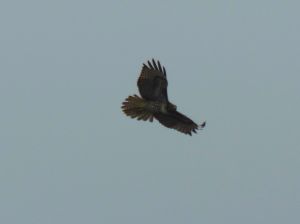
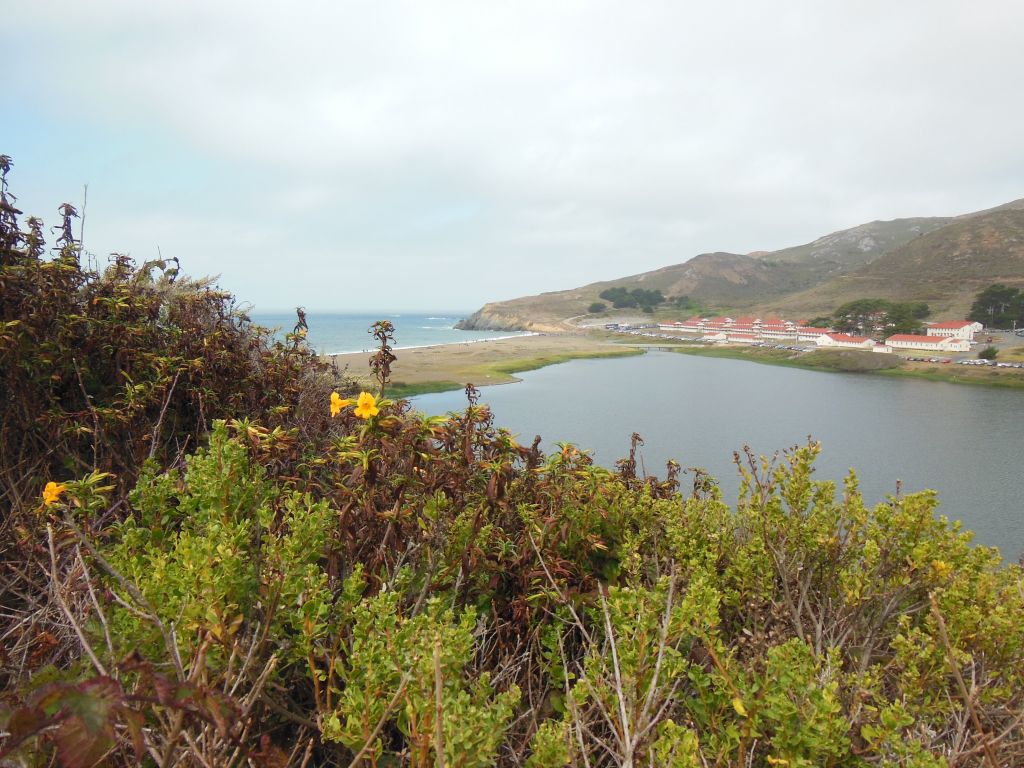
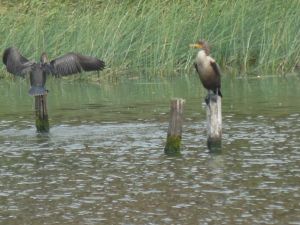
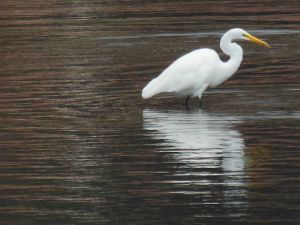
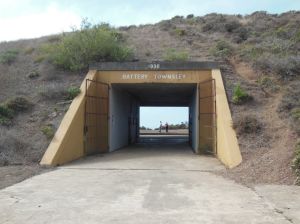
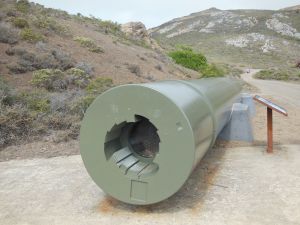
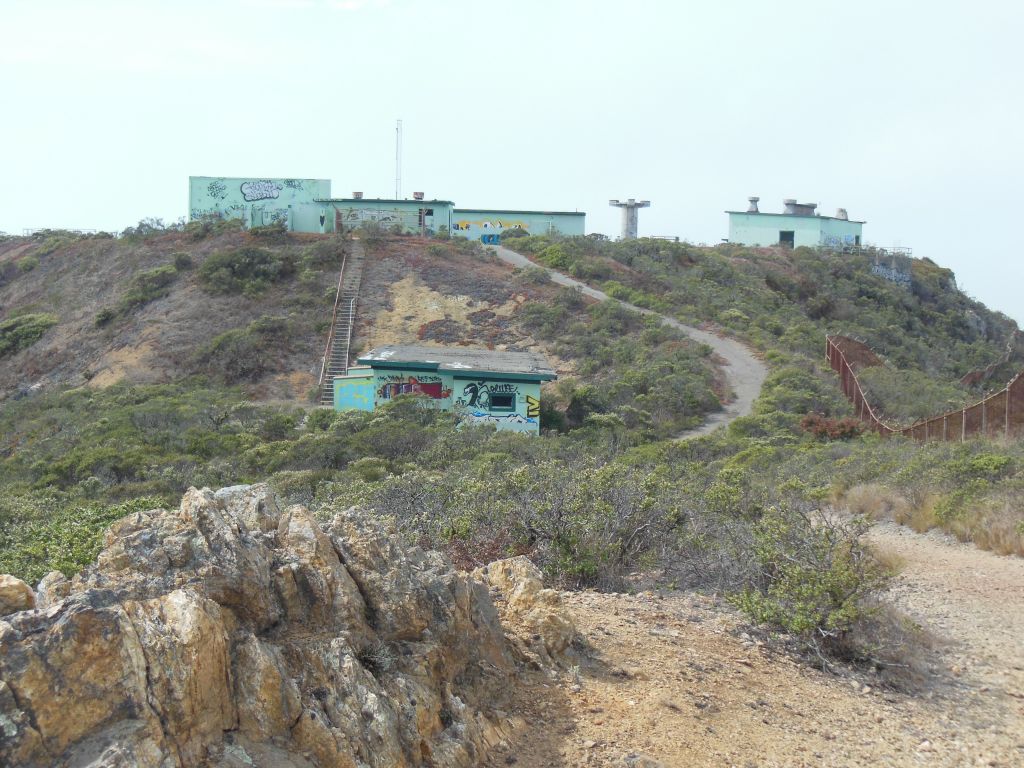
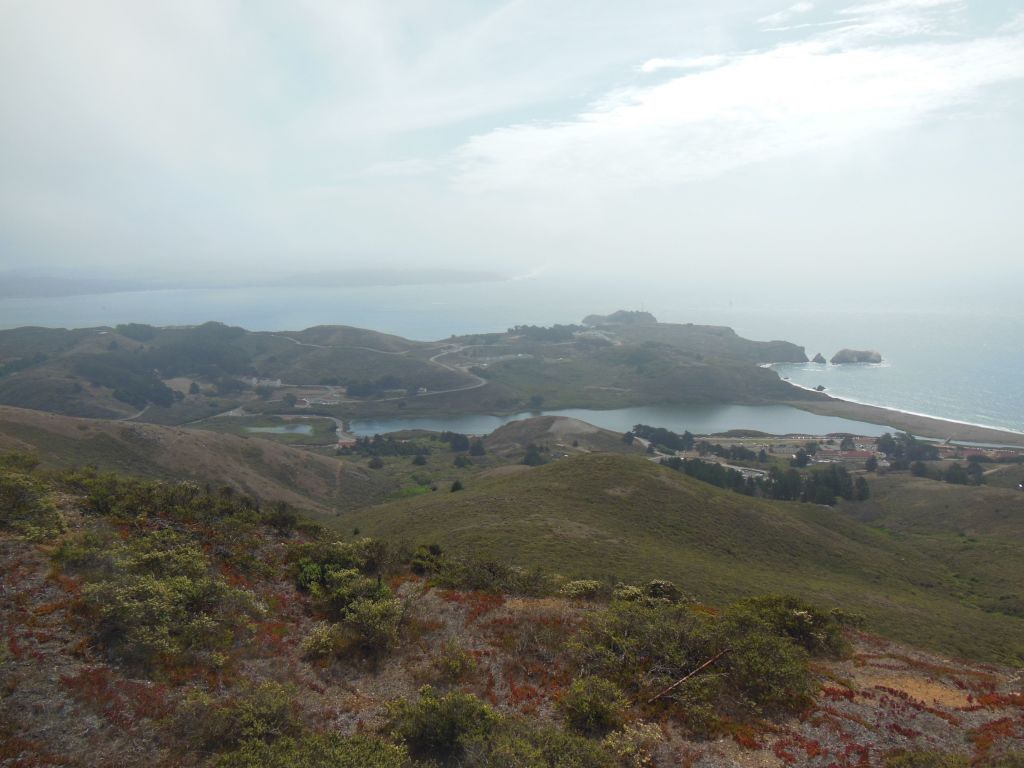
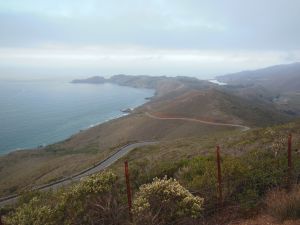
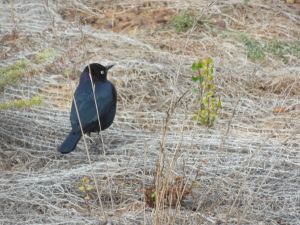
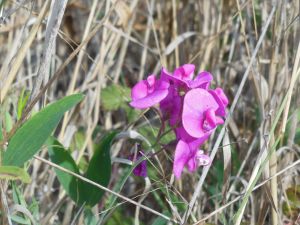
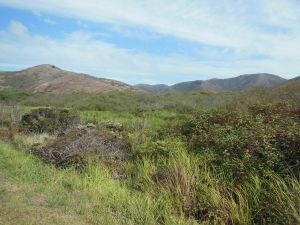


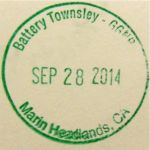
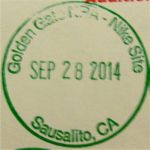
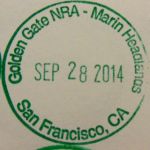
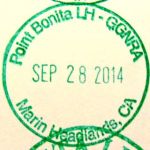
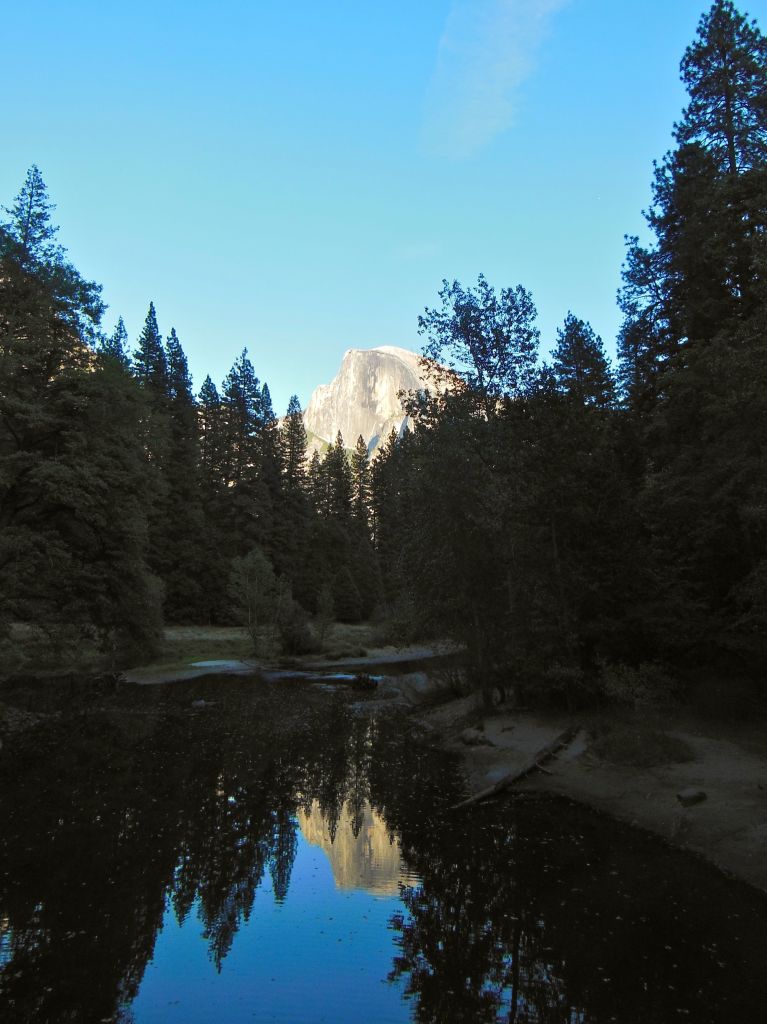
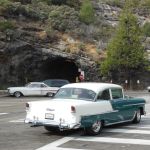
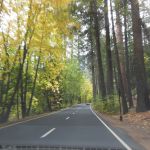
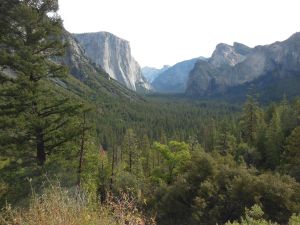
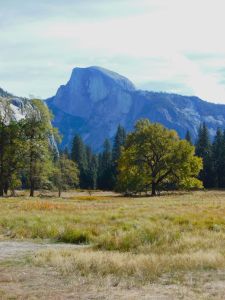
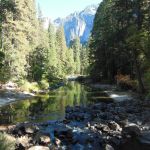
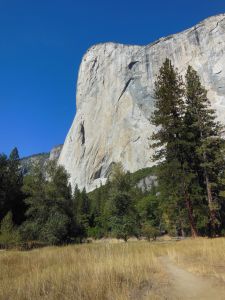
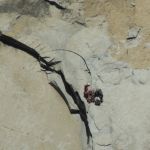
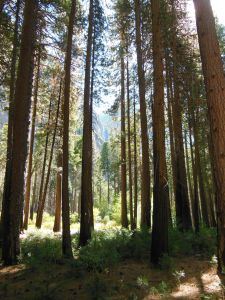
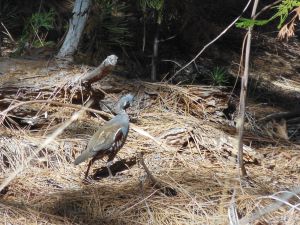
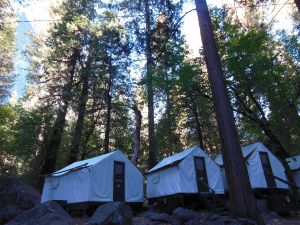
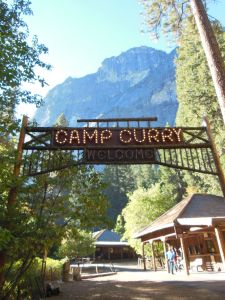
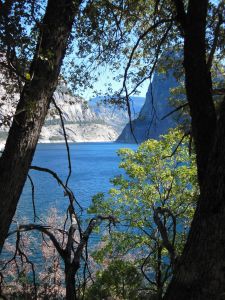
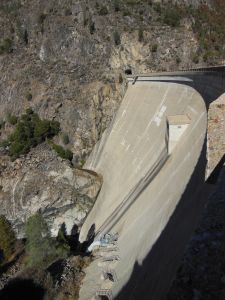
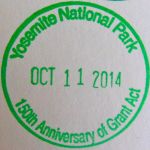
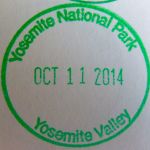
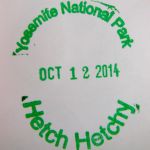


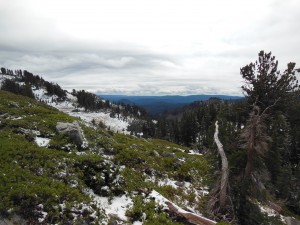
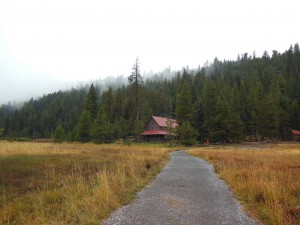
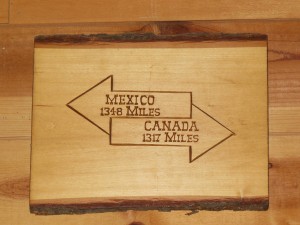 inclined to
inclined to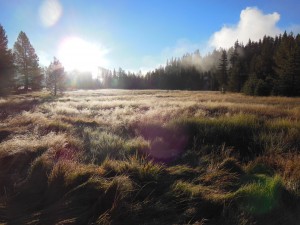 take that trip on!
take that trip on!